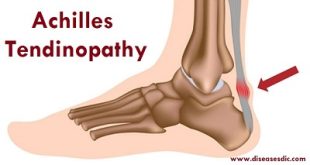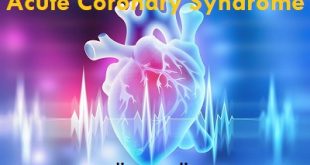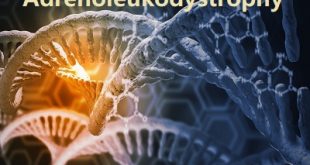Definition
Achromatopsia is an inherited retinal degeneration (IRD) characterised by partial or total colour blindness, in addition to other visual symptoms. The rod and cone photoreceptor cells are responsible for capturing the visual field. The rod cells perceive dim light (scotopic vision), are not sensitive to colour and are responsible for peripheral vision. The cone cells are located at the centre of the retina (the macula) and perceive bright light and colours (photopic vision) to provide sharp central vision. Genetic changes or mutations in genes that function in cone cells are responsible for achromatopsia. Individuals with Achromatopsia have reduced visual acuity and are completely or almost fully colour blind; however, the condition is not progressive and it does not lead to blindness.
Types of Achromatopsia
There are two forms of achromatopsia, with differing symptoms:
- Complete achromatopsia. No cone cell function at all, so people have no colour vision and, more severely, reduced central vision.
- Incomplete achromatopsia. This is a milder form of the condition associated with residual cone cell function, where limited colour vision is present, and other vision problems, such as photophobia, tend to be less severe.
Epidemiology
It is a relatively uncommon disorder that affects an estimated 1 in 30,000 people worldwide. Complete achromatopsia is more common than incomplete achromatopsia. Its incidence varies in different parts of the world. Because there is a genetic link, it is more common in regions where there is a high rate of consanguineous marriages (marriages between relatives) and in the eastern Pacific islands of Pingelap, approximately five percent of the atoll’s 3,000 inhabitants are afflicted. The people of this region have termed achromatopsia “maskun”, which literally means “not see” in Pingelapese. The condition can be traced back to 1775, when Typhoon Lengkieki decimated the population in the island, leaving only a handful of survivors to repopulate the islands. One of the few survivors was a carrier of the rare genetic mutation and passing it on to his descendants, he became the genetic founder for the vision disorder four generations later.
Pathophysiology
This autosomal recessive disease affects all three types of retinal cones. The most common mutations affect genes that code for or regulate cone cyclic nucleotide-gated (CNG) cation channel subunits, including CNGB3 in 50% of cases and CNGA3 in 25% of cases. To date, nearly 100 mutations in CNGA3 and CNGB3 have been linked to achromatopsia in humans. The CNG channels are located on photoreceptor outer segment cell membranes and are involved in signal transduction. These mutations result in a significant decline in cone function. Other implicated genes accounting for a smaller fraction of achromatopsia cases include GNAT2, PDE6C, PDE6H and ATF6.
Symptoms of Achromatopsia
People with achromatopsia may have symptoms that affect their eyes and vision. A person’s visual acuity can also vary according to the severity of the condition. Patients with complete achromatopsia have a visual acuity of 20/200 or lower. Those with incomplete achromatopsia may experience vision as high as 20/80. Far-sightedness is also a common symptom.
Some signs and symptoms may be noticeable shortly after birth. Other indications of the condition might not become apparent until early childhood. Common signs and symptoms of achromatopsia include:
- Light sensitivity (photophobia)
- Rapid and repetitive eye movement (nystagmus)
- Farsightedness (hyperopia)
- Nearsightedness (myopia)
- Low vision
- Color blindness
- Blurry vision
- Blind spots (scotomas)
- Glare
- Difficulty seeing in bright light (hemeralopia)
Nystagmus may develop within the first few months of a child’s life and is often the first symptom to occur. Symptoms may be less severe in individuals with incomplete achromatopsia.
Causes of Achromatopsia
- Genetic Mutations: It is primarily caused by mutations in specific genes associated with cone cell function in the retina.
- Cone Cell Dysfunction: The affected genes, such as CNGA3, CNGB3, GNAT2, PDE6C, and PDE6H, play a crucial role in the normal development and functioning of cone cells.
- Cone Photopigment Disruption: Mutations can result in the absence or dysfunction of cone photopigments, essential for detecting different wavelengths of light and enabling color perception.
- Inheritance Patterns: Achromatopsia is typically inherited in an autosomal recessive manner, requiring both parents to carry a copy of the mutated gene for the child to be affected. In rare cases, it can be inherited in an autosomal dominant manner.
- Autosomal Recessive Inheritance: Both parents are carriers of the mutated gene, and the child inherits two copies of the mutated gene, leading to the expression of achromatopsia.
- Autosomal Dominant Inheritance: Achromatopsia can rarely be inherited when only one parent carries a copy of the mutated gene, and the child inherits this mutated gene.
- Functional Impairment: The genetic mutations interfere with the normal processing of color information in the retina, resulting in the inability to perceive colors.
- Photoreceptor Challenges: Individuals with achromatopsia may experience additional visual challenges, such as sensitivity to bright light (photophobia) and reduced visual acuity.
Risk factors of Achromatopsia
Achromatopsia, or total color blindness, can lead to several complications that affect various aspects of an individual’s life. While the condition itself primarily involves the inability to perceive colors, there are associated challenges that individuals with achromatopsia may face:
- Visual Impairment: Achromatopsia goes beyond color blindness, often causing reduced visual acuity, making tasks like reading and recognizing faces challenging.
- Photophobia: Individuals with achromatopsia are often sensitive to bright light (photophobia), requiring them to use tinted glasses or visors to ease discomfort.
- Nystagmus: Involuntary eye movements (nystagmus) are common in achromatopsia, affecting visual stability and coordination.
- Reduced Contrast Sensitivity: Achromatopsia can lead to difficulties perceiving subtle differences in shades of gray, impacting tasks like navigating uneven surfaces.
- Educational and Occupational Challenges: Visual limitations may pose challenges in education and work settings, requiring adaptive strategies and support.
- Social and Emotional Impact: Achromatopsia can affect social interactions and emotional well-being, impacting self-esteem and confidence.
- Dependency on Adaptive Devices: Individuals may need adaptive devices like tinted lenses or low-vision aids to manage daily activities and enhance visual experiences.
While there is no cure, individuals with achromatopsia often adapt to these challenges through lifestyle adjustments and support systems.
Complications
- Visual Impairment: Achromatopsia often leads to reduced visual acuity, making tasks like reading and recognizing faces challenging.
- Photophobia: Individuals with achromatopsia are sensitive to bright light, leading to discomfort and requiring the use of tinted glasses or visors.
- Nystagmus: Involuntary eye movements (nystagmus) can affect visual stability and coordination.
- Reduced Contrast Sensitivity: Achromatopsia can cause difficulties perceiving subtle differences in shades of gray, impacting tasks like navigating uneven surfaces.
- Educational and Occupational Challenges: Visual limitations may pose challenges in educational and work settings, requiring adaptive strategies and support.
- Social and Emotional Impact: Achromatopsia can affect social interactions and emotional well-being, impacting self-esteem and confidence.
- Dependency on Adaptive Devices: Individuals may need adaptive devices like tinted lenses or low-vision aids to manage daily activities and enhance visual experiences.
How is achromatopsia diagnosed?
An ophthalmologist diagnoses the condition. The retinal exam may be normal.
Color Vision Testing
This test is also called the “Ishihara” color test, where the ability of eyes to differentiate different colors is tested. If the test is not passed the patient has some color vision problems, either partially or completely.
Fundus Autofluorescences Test
A non-invasive imaging technique used to assess retinal pathologies.
Ophthalmic Electrophysiology
A group of tests performed to evaluate how various parts of the eye respond to light. It helps in evaluating the vision system of the eye.
Electroretinography (ERG)
Also known as an electroretinogram, measures the electrical response of the rods and cones of the eye. Normal eye response shows a wavy pattern response to each flash of light.
Optical Coherence Tomography
A non-invasive imaging technique, used to generate pictures of the back of the eye, the retina. Also used to measure the thickness of the retina and the optic nerve.
Visual Field Testing
This test measures, how far the eyes can see without moving and how is the vision in a different field of vision.
Treatment
there is no cure for achromatopsia, and treatment options primarily focus on managing symptoms and improving the individual’s quality of life. It’s important to note that developments in medical research may have occurred since then. As of my last update, here are some of the approaches used to address the challenges associated with achromatopsia:
Visual Aids and Devices
Individuals with achromatopsia may benefit from using visual aids and devices such as tinted lenses, sunglasses, or other adaptive optics to reduce sensitivity to bright light (photophobia) and enhance contrast.
Low-Vision Rehabilitation
Rehabilitation programs, including low-vision therapy, can help individuals develop strategies to maximize their remaining vision and adapt to daily tasks.
Educational Support
Children with achromatopsia may benefit from educational support, including accommodations in the learning environment and the use of assistive technologies.
Orientation and Mobility Training
Training programs can help individuals navigate their surroundings more effectively, taking into account challenges such as reduced contrast sensitivity and nystagmus.
Genetic Counseling
Genetic counseling can provide valuable information for individuals and families affected by achromatopsia. It can help them understand the genetic basis of the condition and make informed decisions about family planning.
Achromatopsia Lenses To Improve Day-Time Light Sensitivity
Prevention of Achromatopsia
Achromatopsia is primarily a genetic condition, and currently, there is no known way to prevent the occurrence of the genetic mutations associated with this condition. It is typically inherited in an autosomal recessive manner, meaning both parents must carry a copy of the mutated gene for their child to be affected. In some rare cases, it can be inherited in an autosomal dominant manner.
While preventing the genetic mutations is not within our current capabilities, there are a few considerations for individuals with a family history of achromatopsia or those concerned about passing on the condition:
Genetic Counselling:
Individuals with a family history of achromatopsia or those considering starting a family may opt for genetic counselling. Genetic counselors can provide information about the risk of passing on the condition, discuss available testing options, and offer guidance on family planning.
Genetic Testing:
It can be conducted to identify whether an individual carries the specific gene mutations associated with achromatopsia. This information can be useful in family planning decisions.
Family Planning:
For individuals identified as carriers of achromatopsia-related gene mutations, family planning decisions can be made with the guidance of healthcare professionals. This might include considering options such as in vitro fertilization (IVF) with pre-implantation genetic testing.
It’s important to note that these measures do not prevent the occurrence of achromatopsia but can provide individuals and families with information to make informed decisions about their reproductive choices.
 Diseases Treatments Dictionary This is complete solution to read all diseases treatments Which covers Prevention, Causes, Symptoms, Medical Terms, Drugs, Prescription, Natural Remedies with cures and Treatments. Most of the common diseases were listed in names, split with categories.
Diseases Treatments Dictionary This is complete solution to read all diseases treatments Which covers Prevention, Causes, Symptoms, Medical Terms, Drugs, Prescription, Natural Remedies with cures and Treatments. Most of the common diseases were listed in names, split with categories.







